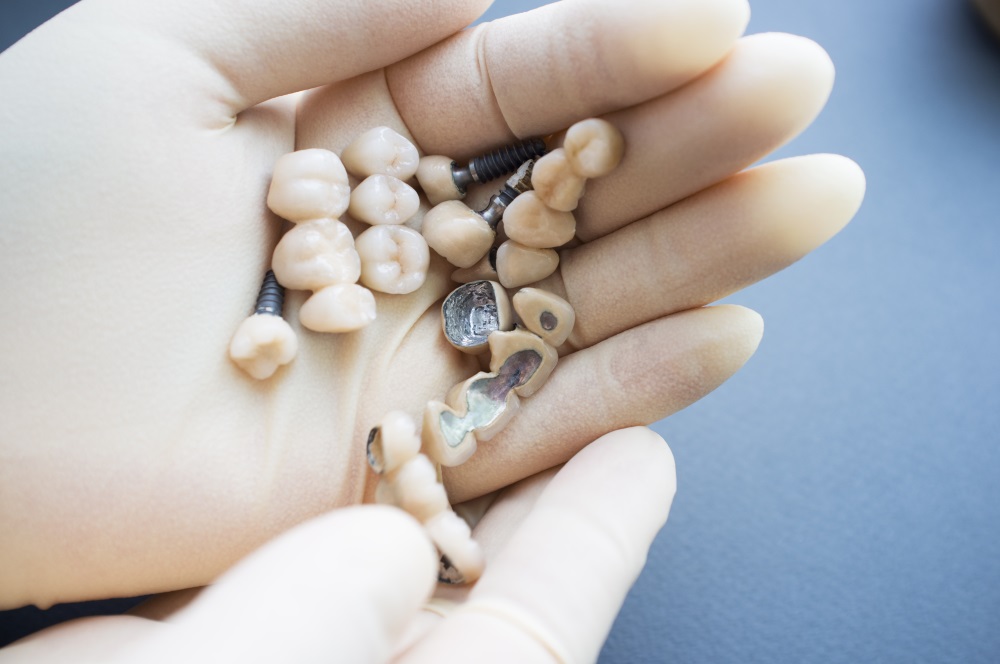As we head into the new year, many of our patients have expressed interest in learning more about specific dental topics. And, well, there are some topics that affect more patients than others. More than 40% of Americans have a dental crown, and that percentage only goes up the older you get. And so, since many of our patients might need crowns in 2019, we wanted to offer information on what different types there are and all the benefits of popular options, like porcelain crowns.
If you are faced with needing a dental crown next year, then keep reading to learn more about the crowns used in Dr. Ku’s office.
What is a dental crown?
Simply put, a crown is a cover or “cap” that Dr. Ku can put on a tooth. The crown restores the tooth to its normal shape, size and function. The purpose of a crown is either to make the tooth stronger or improve the way it looks. Crown restore your bite, too, which will help minimize jaw and head pain if you suffer from this.
Since the mouth is linked to most systems in your body, a crown can positively impact your whole heath. For example, people who suffer from missing teeth may have problems eating crunchy, high-fiber foods. This can lead to both malnourishment and cause an individual to rely on soft, high carbohydrate food that ends up causing weight gain.
Crowns are made by taking an impression of the tooth or teeth they’ll be covering. Before this impression is created, your dentist must first reduce your tooth’s size so that the crown can fit properly. Your dentist may also place a temporary crown while the permanent one is being made, so don’t worry—you won’t be stuck with funky dagger teeth.
Are there different types of crowns?
You bet! There are many different types of dental crowns to choose from. Since it can be overwhelming to parse through an overload of information in the office, we wanted to share this as your low-stress reference guide:
- Base metal alloy – This metal is rarely used to make full-metal crowns. Instead, it requires the least amount of healthy tooth to be removed prior to fitting. But once it’s on, metal crowns can withstand biting and don’t wear down as easily. These qualities make them a popular option for many patients.
- All ceramic – These crowns provide a better natural-color-match than any other crown type and are usually the most suitable for people with metal allergies. All-ceramic crowns can be used for front and back teeth.
- All porcelain – The most popular type of crown are those made from porcelain since they not only replicate the original tooth in function, but can be designed to look like the original—or even better. Patients have reported that all-porcelain crowns feel the most like their real teeth since they can be molded to any size and shape.
- Gold alloy -This crown is a mix of gold, copper and other metals. In addition to providing a strong bond to the tooth, it doesn’t fracture—and it doesn’t wear away the tooth itself!
What is it like to get a crown?
Proper preparation for a crown is important to ensure your smile and teeth appear natural and function right in the end! First, your dentist will remove a fine layer of enamel from the front of the tooth, then take an impression of your teeth. Sometimes it can take a couple of weeks for this crown to be completed. And because of this, your dentist may fit you with temporary crown to protect your teeth after the enamel was removed.
When the crown is ready, your dentist will check it to ensure the color, shape and size are spot-on. Dentists have the ability to fine tune crowns after they arrive to ensure they blend in perfectly.
After prepping your teeth the day of placement, the crown is bonded to your teeth using a dental cement. The cement is allowed to harden with a curing light which sets the teeth in a matter of minutes.
While the whole process can take several weeks (due to making the crown), putting them on to your teeth can be done in a couple of hours!
If you are looking for a dentist to help improve your smile, look no further than Dr. Ku’s office! For the second year running, Dr. Ku has been voted the #1 Dentist in Fort Worth by the Star Telegram. Ask Dr. Ku to rejuvenate your smile today!
The post Dental Crowns—What You Probably Don’t Know appeared first on Fort Worth Dentist | 7th Street District | H. Peter Ku, D.D.S. PA.
Dental Crowns—What You Probably Don’t Know posted first on http://dentistfortworth.blogspot.com

No comments:
Post a Comment